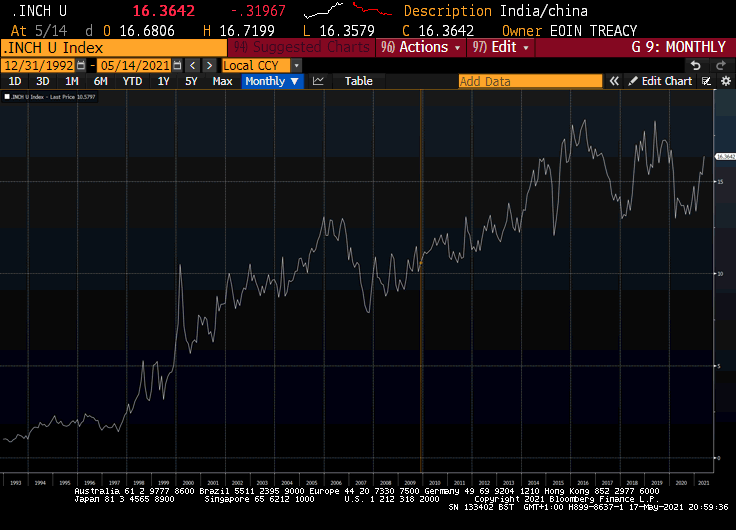Email of the day on India's demographics
You say that India has a significant demographic tailwind, taking the consensus view that that is an investment plus; one that is embedded in so many analyses on India. For a challenge to this listen to the Meb Faber interview with Vikram Mansharamani, 50 minutes in for 5 minutes, on his take on India and why in fact the demographics are a head not a tail wind: https://www.youtube.com/watch?v=cM40JZ3NSNk&t=30s
Thank you for this link and the discussion raises a large number of questions. There are two that I think are particularly relevant. The first is on the assumed ubiquity of the bullish India story and the second is the continued dominance of capital over labour.
I sit on investment committees for a number of funds and family offices and I don’t see a lot of enthusiasm for positioning in India. If people really believed it was going to be the next China and the workshop of the world, they would have more invested. Instead, I hear a lot of push back because of the perpetual state of confusion and anyone who visits India is struck by the disorder compared to China.
The question of whether demographics is a tailwind for India, or just about all of Africa for that matter, centres on standards of governance. China was able to mobilise its massive young population because it opened up to the world and made investment and manufacturing easy. India’s challenge is there are a lot of vested interests that are still anticompetitive. Breaking that stranglehold is the biggest headwind to outsized economic growth.
The MSCI India / MSCI China ratio has been ranging since 2016 but India is currently outperforming as it trends back upwards from the lower bound. India tends to outperform during reflations.

Democracies are messy but flexible. They are capable of absorbing shocks. Autocracies always look stable from the outside, but when they collapse the resulting chaos destroys invested capital.
The question of the dominance of capital is a production of the global low interest rate environment. If that persists the role of labour will continue to decline. However, all we have to do is look around. Universal basic income is a real-world phenomenon today and workers are succeeding in demanding higher wages. At the same time inflationary pressures are rising and putting upward pressure on rates. The technology sector is underperforming as interest rates take a chunk out of valuations. That suggests relying capital to remain dominant over labour is a dangerous assumption.
The ultimate state of technological achievement is dematerialization. Brick and mortar stores have disappeared online and the survivors now have to have an ecommerce presence. The assumption is artificial intelligence and autonomy are both inevitable and imminent. These are two separate but complimentary themes.
Artificial intelligence is primarily about outsourcing routine operations to software. Form filling and automating phone conversations are two obvious examples where jobs are threatened. The big data applications of artificial intelligence are where whole new sectors will evolve because the data sets are now so large that is impossible for humans to make sense of them alone. The challenge is these new sectors are likely to be much less labour intensive than what they replace.
Autonomy is potentially the most disruptive technology since the introduction of the internet. However, it is not yet available. Tesla is following the “move fast and break stuff” model while Alphabet has adopted the “slow and steady wins the race” model. Neither is imminently going to release a fully functional solution. Creating a fully autonomous vehicle is a task on the scale of the original space program because they wish to preserve life. It’s a lot easier to develop autonomous operations to kill people which is the focus on military applications in everything from tanks to planes.
Future forward new technology is very interest rate sensitive. Today, there is money for every kind of new venture. How much of that will still be around if interest rates rise? That’s the real race; achieve market dominance before interest rates choke off investment.
Back to top

